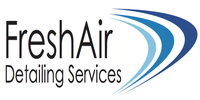How to Refurbish Pneumatic De-Ice Boots
How to Refurbish Pneumatic De-Ice Boots
Refurbish Pneumatic De-Ice Boots:
Refurbishing the Pneumatic De-Ice Boots refers to the stripping and sealing of the rubber edges along the leading edge of the wings. De-Ice boots help make sure that the leading edge of the aircraft doesn’t start to accumulate ice at high altitudes.
Materials Needed for Refurbish Pneumatic De-Ice Boots:
– PBS Prep,
– PBS Sealant,
– A bucket of water (half filled),
– A Scrubbing Sponge,
– A Soaking Sponge,
– A few Terry Towels,
– 3M 3 inch Masking Tape.
Procedure:
Step 1: Setup:
a.) Tape Off Perimeter of Boots: Using 3M Masking Tape, tape off along the perimeter of the de-ice boot. The tape will protect the paint on the wing from the products.
Step 2: Strip & Rinse Boots:
a.) Apply PBS Prep: Take PBS Prep and apply a small amount to the scrubbing sponge and apply to rubber surface. Rub back and forth and agitate the surface. The PBS Prep will start to remove all previous treatment and buildup.
- Rinse with water: The boots will now be ready to be rinsed clean. Take a clean terry towel and wet it down with the water pump spray bottle. Slowly rinse off the PBS Prep treatment. Now allow a minute to dry before step 3.
Step 3: Apply Sealant:
a.) Apply PBS De-Ice Boot Sealant: The boot is now ready to be sealed. Take the PBS Sealant and apply a small amount to a clean terry towel. Now take the cloth and apply the sealant, wiping in one direction down the leading edge of the boot. Apply 2-3 coats allowing each coat to dry before applying the next layer.
Step 4: Wrap Up:
a.) Remove Tape: Remove ALL Tape from Static Ports and Edges of Boots that you were working on.
b.) Check work AGAIN: Check over work for streaks, missed areas, etc.
c.) Clean Up: Put dirty rags in correct bins, throw away trash & gloves etc.








